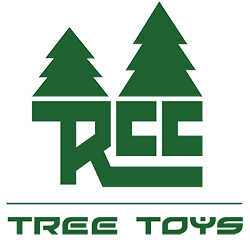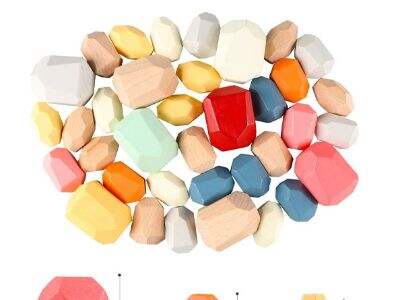Ever wondered how your favourite toys are made? What materials do they use? We at Tree Toys feel this is important to know because there are many ways to utilize different types of materials in toy making. Today, we’ll be examining the costs of producing plastic toys and wooden toy blocks. This is how you can discover where your toys are made and why that’s significant.
Reshaping Toy Production: A Comparison of Plastic and Wood
Among the materials used in toy production, plastic and wood are two common ones. Plastic toys are typically produced by specialized machines. These machines melt the plastic down to a soft state. When it hardens, they can use molds to mold different toys from the soft plastic. Molds are basically large stamps that shape the toy. In contrast, stackable wooden toys are produced differently. Artisans with expert skills shape blocks of wood into fun, colorful toys. Artisans use tools to cut the wood and precisely give it the desired shape. Each material has its advantages and disadvantages for toys, and knowing this helps explain the price of some toys versus others.
The Cost Comparison of Plastic and Wooden Toy Manufacturing
Next, let’s look at the cost of making plastic toys versus wooden toys. Plastic toys also tend to cost less to produce. That’s because plastic is so ubiquitous and can be rapidly molded into all sorts of designs. The machines that make plastic toys can run quickly, helping keep costs down. In contrast, producing wooden toys is more time and skill-intensive. The craftsmen who make natural wooden toys have to be super careful and exact. This increased time and talent required to make wooden toys adds to their cost. But wooden toys tend to hold up better. They tend to be stronger and can take more of a beating. Which means that while you may pay more for a wooden toy, you may not have to replace it as frequently as you might a plastic toy.
The Cost of Production of Plastic and Wooden Toys
When comparing plastic versus wooden toys, it’s necessary to consider their environmental impact. Plastic toys are made from raw materials such as oil, which is a non-renewable resource. This means that it can not and once we are done with it, it will not be replaced. The manufacturing of plastic can sometimes cause damage to the environment and lead to pollution. In contrast, wooden toys come from trees — a renewable resource. What that means is, as long as we don’t screw up our forests too badly, we can continue planting lots more trees. They are made with natural materials so they are often a more earth-friendly option. When you choose wooden toys, you're doing your little part to keep our Earth safe and help reduce waste. Select toys that are made from renewable resources for a healthier planet for all.
How Molded or Wooden Toy Production Will Save You Jingles
First off, the money aspect of choosing plastic over wooden toys. Though plastic toys cost less to produce, they may not have the longevity of wooden toys. What this means is that while you save money in the short term, your long term expenditure might be higher when you need to purchase new plastic toys over and over. Of course, wooden toys may be a bit more expensive at the outset, but can be used for countless hours and enjoyment. Since these toys last a long time, children tend to play with them for long hours, as they are more durable and can be creatively played with. Purchasing high-quality wooden toys can save you money in the long term since you won’t have to replace them as often as with plastic toys. Hence, while an initial investment for the wooden toy could be larger, its value can be considerably higher.

 EN
EN
 AR
AR
 BG
BG
 HR
HR
 CS
CS
 DA
DA
 NL
NL
 FI
FI
 FR
FR
 DE
DE
 EL
EL
 IT
IT
 JA
JA
 NO
NO
 PL
PL
 PT
PT
 RO
RO
 RU
RU
 ES
ES
 SV
SV
 IW
IW
 ID
ID
 SR
SR
 SK
SK
 UK
UK
 VI
VI
 HU
HU
 TR
TR
 MS
MS
 GA
GA
 CY
CY
 IS
IS
 HY
HY
 MR
MR
 KK
KK
 SU
SU
 UZ
UZ
 HAW
HAW
 XH
XH
